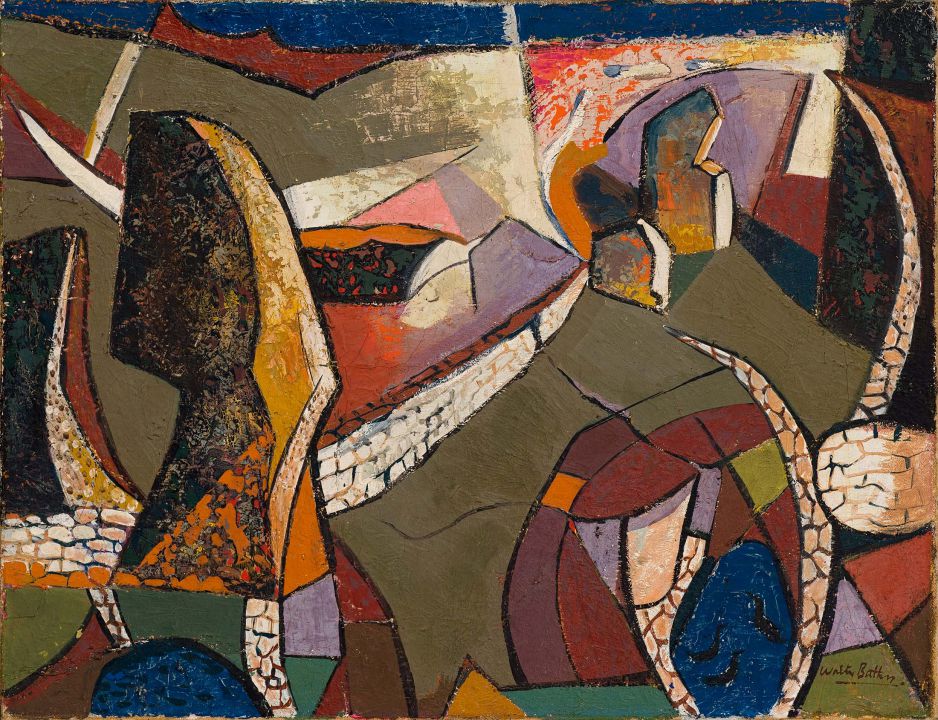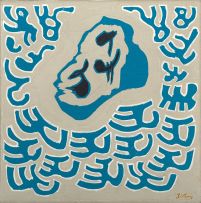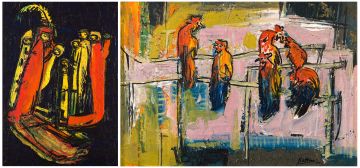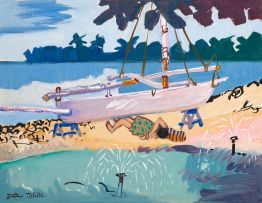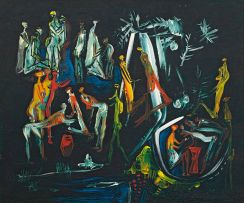Important South African and International Art, Decorative Arts & Jewellery
Live Auction, 15 October 2018
Art: Evening Session
Incl. Buyer's Premium & VAT
About this Item
signed
Notes
Walter Battiss was greatly influenced by the art of South Africa's first people, which he documented and researched as a young man at remote sites across the country. "When I came down from the mountain of initiation I was articulate and free," he wrote of his formative experiences in Fragments of Africa (1952). Battiss produced many drawings and notebooks while in the field; they reveal an acutely perceptive and sensitive viewer. "The rock painters were not seduced by colour, were never tempted to abandon form for colour," noted Battiss in 1945. "Form is timeless security - the suggestion of the eternal not the ephemeral. Colour fades, form remains."1 A vivid colourist, Battiss nonetheless kept a loose faith in form throughout his career as a painter. This undated lot is typical of work from the 1950s when he began integrating compressed perspectives, geometric simplification and non-naturalistic colours into his compositions. His affection for the landscape genre remains abundantly clear. This cubistic landscape features clearly delineated rock outcrops, manmade walls and receding horizon. The success of the composition however relies on the artist's skillful interlocking blocks of olive, burnt orange, brown, mustard and lavender. The radical simplification of the animal life in the foreground pools of blue would become a dominant feature of his later work. - Sean O'Toole
1. Wall text (WBC/08/010, 1945) at exhibition The Origins of Walter Battiss: "Another Curious Palimpsest", Origins Centre, Johannesburg, 2016.
